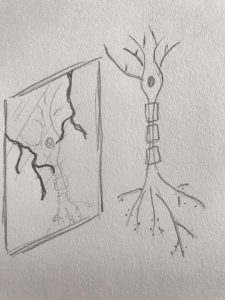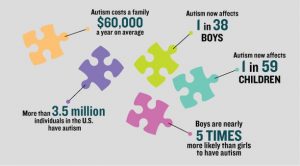What is Autism Spectrum Disorder?
Autism Spectrum Disorder (ASD) is characterized by numerous behavioral symptoms and varying neurological abnormalities. Due to the diversity among individuals on the Autism spectrum, a single “cause” of the development cannot be determined. Unlike many other conditions, a single gene cannot be linked to Autism. In cases where one specific gene can be associated with a condition, the condition manifests in a similar way every time. In ASD, the symptoms–both behavioral and neurological–are unpredictable. Even so, one common factor among cases of Autism is a dysfunctional immune system. Without a proper immune system, proper development does not occur and neurological pathways do not function as they should.
 Social-Behavioral Symptoms & Mirror Neurons
Social-Behavioral Symptoms & Mirror Neurons
Given ASD’s complexity, conceptualizing the condition as a whole can begin by assessing each symptom and its potential neurological correlates. When characterizing the behavioral symptoms of ASD, many tend to manifest in social interactions. Many individuals with ASD experience difficulty expressing emotion, empathizing, and theory of mind. This behavioral symptom likely stems from the lack of mirror neuron network that many individuals with ASD experience. Mirror neurons are responsible for the Chameleon Effect, a psychological phenomenon in which individuals copy one another–especially when mutually admired. An individual is more likely to unconsciously copy another’s behavior if they have a fondness for that person. This can be seen in the “contagiousness” of yawning, foot wiggling, sniffling, etc. The Chameleon Effect stems from the evolutionary advantage of fitting in with society. As the influencers of the Chameleon Effect, mirror neurons are responsible for human imitation. These mirror networks are composed of visuospatial neurons that fire when an individual observes the behavior of another individual. When this occurs, neurons fire in the same areas and patterns as they do when the individual themself is experiencing the movement/event. For example, when seeing someone in extreme pain, one can imagine how the injury would feel–almost as if they are feeling the pain themselves. In this instance, the brain would be firing in the individual observing the event the same way in would in the individual experiencing the pain. In humans, mirror neurons can show these firing patterns in the premotor cortex, the supplementary motor area, the primary somatosensory cortex, and the inferior parietal cortex.
In the case of ASD, where one symptom or neurological factor may lead to another, the lack of a fully developed mirror neuron network may be due to the dysfunctional immune system discussed earlier. Research has yet to discover the cause of the abnormal mirror neuron network in ASD, but studies have shown that the dysfunctional immune system common in people on the Autism spectrum can lead to improper neuronal development and interrupted neural pathways. Uncovering the full story of ASD development will likely occur by piecing together the common factors such as the social-behavioral symptoms, the abnormal mirror neuron network, and the dysfunctional immune system often observed in cases of ASD.
